Ultimate guide to Pisa's religious sites (christian and jewish) for cruise passengers to visit when calling at the port of Livorno.
Three of the highlights of Pisa are religious sites always included on the shore excursions offered by cruise lines. But there are many other religious sites, including the synagogue and the Jewish Cemetery, which can only be visited if you travel to Pisa on your own.
Contents
- Church of Saint Stephen
- Church of Saint Mary
- Saint Catherine Church
- Saint Michael Church
- St. Paul Church
- Church of Saint Sepulcher
- Synagogue
- Jewish Cemetery
To discover how to travel to Pisa from the port of Livorno on your own and explore the city independently, click here, to learn more about the top things to do and sites to visit check our article about the top 8 highlights of Pisa.
On this page you will find the reviews of the most interesting religious sites in Pisa, among the many churches in the city.
1. Chiesa di San Stefano dei Cavalieri
(Church of Saint Stephen)
The most notable part of the Church of Saint Stephen of the Knights is the marble facade.
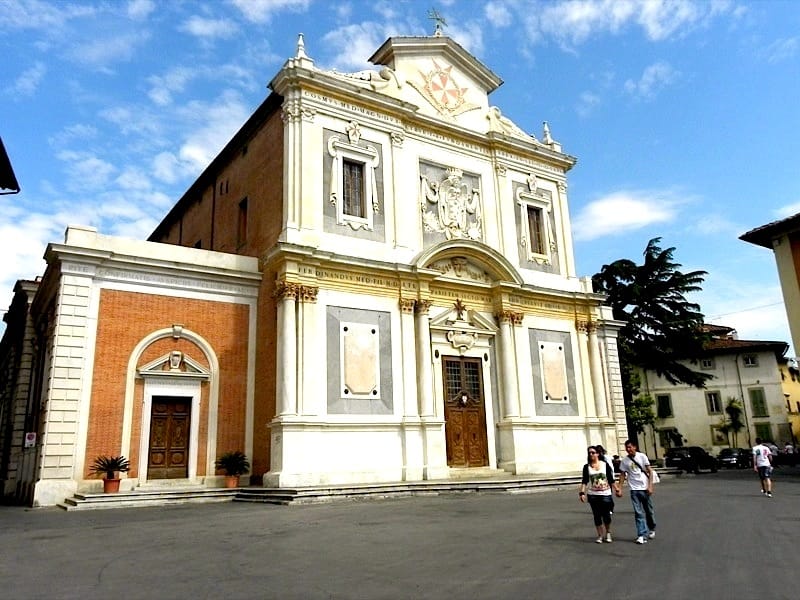
Church of Saint Stephen, Pisa
Photo © IQCruising.com
The interior also features a beautiful ceiling of engraved wood and painted gold. All around the building, you can see trophies of flags taken from ships owned by the Turks during sea patrols. Another highlight is the Baroque high altars, a centerpiece of the building.
2. Chiesa di Santa Maria della Spina
(Church of Saint Mary)
This small Gothic church was built in 1230 and was dismantled in 1871 and subsequently rebuilt on raised ground due to the dangerous level of the Arno River. A favorite of those seeking Gothic architecture, its external face is composed of marble lay in polychrome bands. There are two gates with lintel arches and the right side has thirteen statues of the Apostles and Christ.
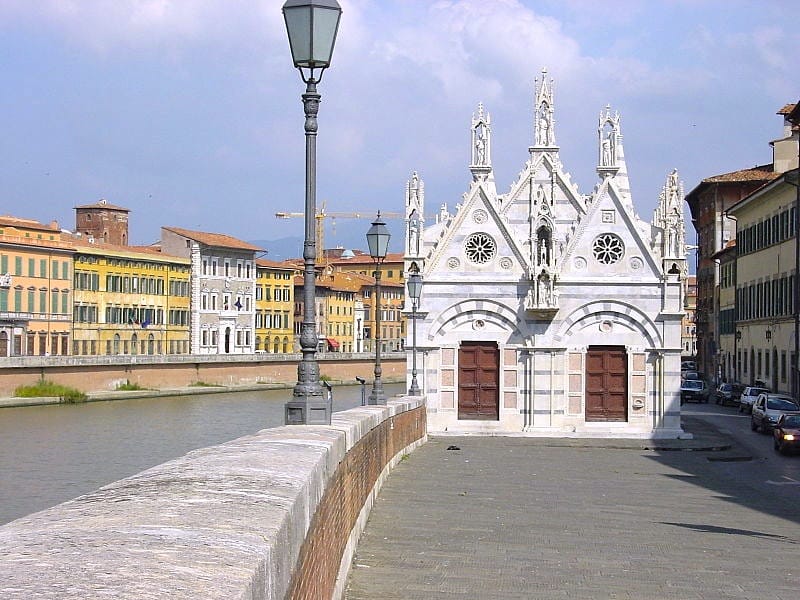
Santa Maria della Spina, Pisa
Photo: Stephan M.Höhne CC-by-SA
The backside of the building features three round arches and the tympani are adorned with Evangelist symbols. The niches are filled with statues of Saints John the Baptist, Peter, and Paul. Most of the art featured is by the sculptor Pisano.
3. Chiesa di Santa Caterina
(Saint Catherine's Church)
Known as the church that houses the pulpit where St. Thomas preached in the 17th century, this church is rich with history.
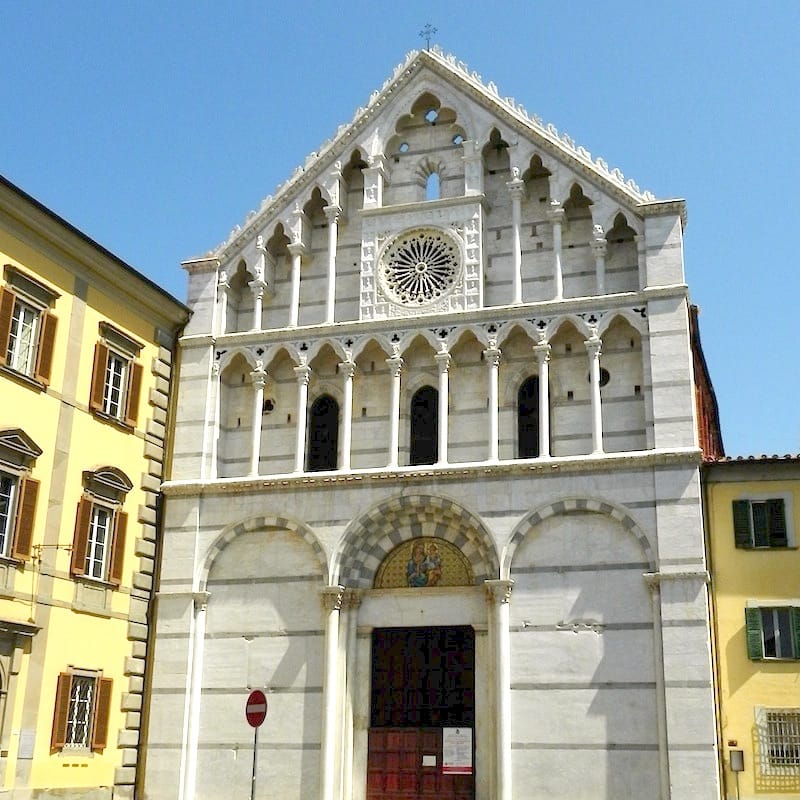
Saint Catherine's Church, Pisa
Photo © IQCruising.com
Simone Martini painted St. Catherine Polyptych in 1320 for the church. It has been removed and put in the museum in Pisa but is still one of the most famous works by the artist. Given to the monks of St. Dominic’s order, the church worked in conjunction with the local hospital.
4. Chiesa di San Michele
(Saint Michael's Church)
This church used to belong to the Benedictines followed by the Camadolese starting in the 12th century. Built in the late 10th century, it actually lies outside the walls of the city. The facade features three Gothic loggias and three portals complete with lunettes.
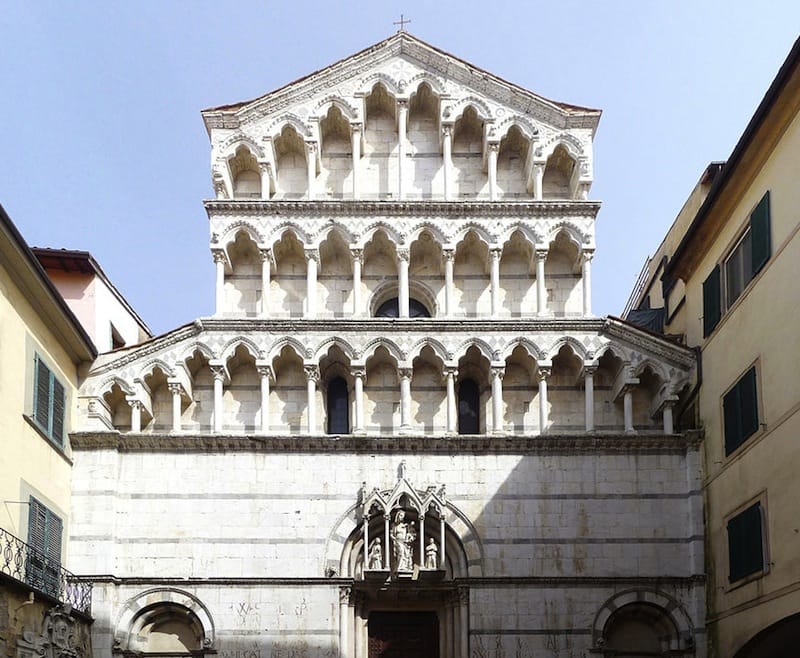
Saint Michael's Church, Pisa
Photo by Lucarelli CC-by-SA
The crucifix in the church is the work of Nino Pisano in the 14th century. Under the pavement of the current church lie the remnants of the former church as well as the crypt of the old cemetery.
5. Chiesa di San Paolo
(Saint Paul's Church)
Once a sacred church, the ground has been unconsecrated so it can be used for cultural events. The outside features two colors of marble stones that give the church its striped appearance. Biduino sculpted the arcades and the bell tower was erected in the 17th century.
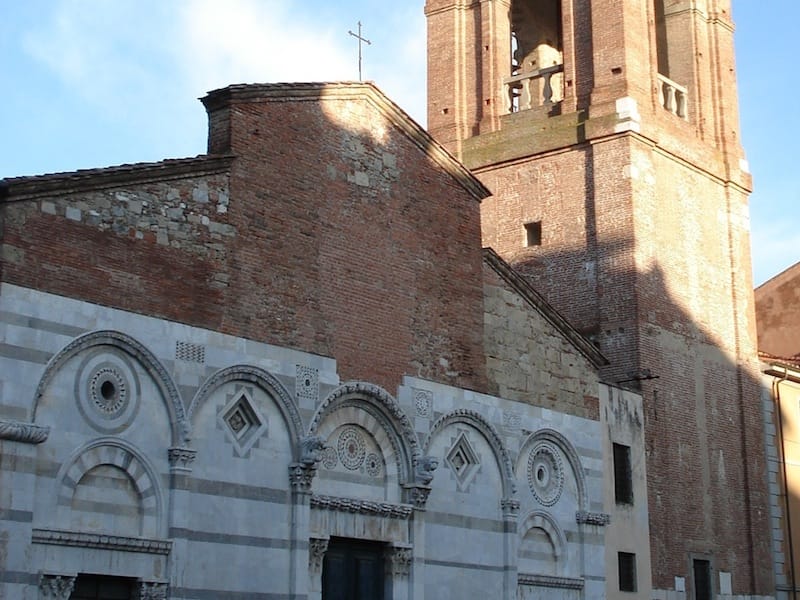
St. Paul's Church, Pisa
Paolo Fisicaro CC-by-SA
Frescoes appear all over the walls, many from the 12th and 13th centuries. Stucco decorations were added in the 18th century to give the church a more modern flair.
6. San Sepolcro
(Saint Sepulcher's Church)
Designed by Diotisalvi who also took on the Baptistery of Pisa Cathedral, this church has an octagonal plan and was surrounded by a portico until the 16th century. Many of the relics were brought to Pisa by archbishop Dagobert after the First Crusade.
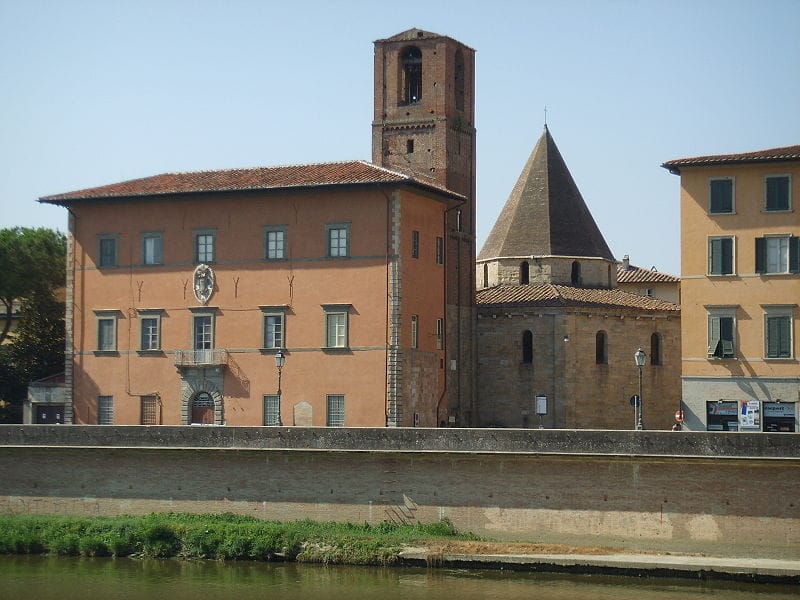
Saint Sepulcher's Church, Pisa
Sailko CC-by-SA
The overall structure is meant to resemble the Dome of the Rock in Jerusalem, a place conquered by the crusaders. Many of the portals feature lions’ heads in marble. The interior received an update in 1720 in the Baroque style but was partially destroyed in the 19th century. Some of the remaining pieces include a panel of the Madonna with Child and a tombstone of Marie Mancini. The bell tower remains unfinished to this day.
7. Sinagoga
(Synagogue)
The Synagogue on Via Palestro is a popular destination for both Jewish visitors and Christian tourists in the region. Originally rented from the Serravallinin family in September of 1595, the building was purchased in 1647 and totally restored in the 1860s using a plan drawn up by architect Marco Treves. This synagogue works as the focus of the Jewish community.
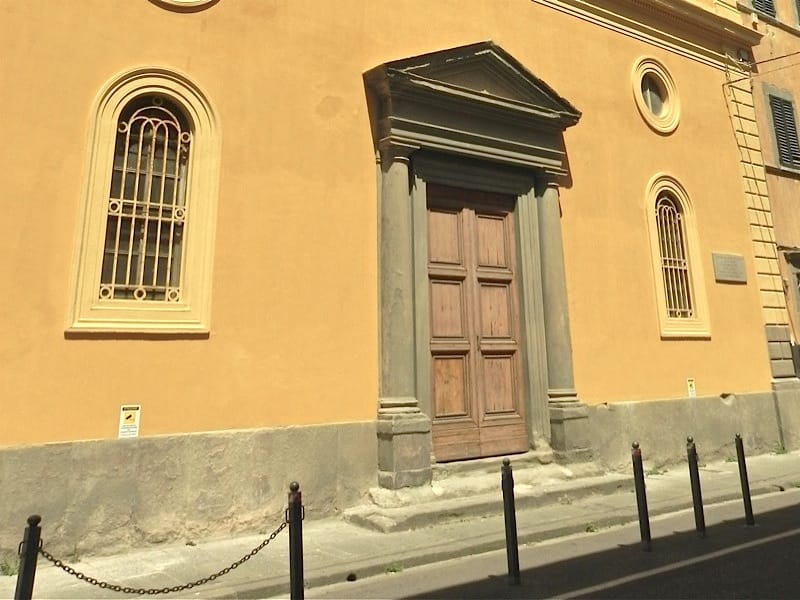
Synagogue, Pisa
Photo © IQCruising.com
The synagogue has been used consistently for the past 400 years. The building is considered a unique example of Italian Jewish religious architecture. As the community accepted the Jewish people into the fabric of Pisa, it became a testimony of the history and culture in the region.
8. Jewish Cemetery
In 1674, the ground for this cemetery was given to the Jewish people by the Grand Duke Ferdinando II. This was seen as an acknowledgment of the Jewish community in Pisa who had already resided there for approximately four centuries. The age of the cemetery makes it one of the oldest Hebrew burial places in Europe. Inscriptions on the tombs feature many languages including Hebrew, Spanish, Italian, Portuguese, German, and French. There are graves of Jewish soldiers who died during World War I. These bodies lie alongside Jewish people killed by Fascist and Nazi violence. A tombstone has been set on the funeral chapel wall stating the names of those who died in concentration camps. This cemetery remains a popular attraction for those looking to pay their respects to the many Jewish people killed in acts of genocide.





